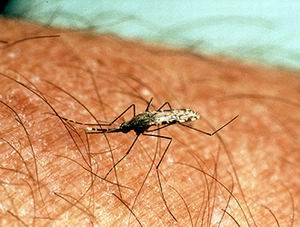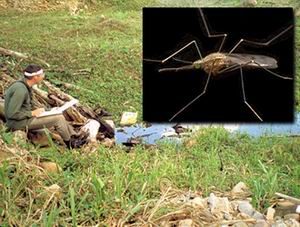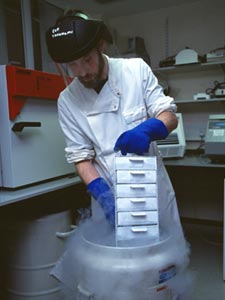Discovering and understanding
Malaria
Global warming
Malaria causes between one and three million deaths per year in the subtropics. It is caused by a tiny parasite, which is passed to humans by the Anopheles group of mosquitoes. In order to control the spread of malaria, we need to control the mosquitoes.

Only some species of Anopheles transmit malaria. Many are important for the environment they live in, and so we only want to control the species that pass the disease to us.
The different species behave in different ways. Some species might live by freshwater and bite animals, whereas others might live near salt water and bite humans.
If we understand the behaviour, we can target our control methods. By targeting our pesticides on the right place or time of day, we can destroy the disease-carriers, but not harm any other species.
Mosquitoes
Ralph Harbach's work in Europe focuses on one particular species of mosquito called Anopheles masculipennis. This is one of a group of species that behave differently to each other but look very similar. The challenge is to find some way to distinguish between them.

The researchers are collecting adult mosquitoes and larvae from their natural habitat and studying their DNA.
Learn more about:
 |
Analysing DNA
The DNA is sequenced to produce a pattern of DNA bands. |
| Each DNA profile can then be matched with the behaviour and habitat the mosquito was collected in. This information can be used to monitor mosquito populations and determine whether action should be taken to eliminate those species that transmit disease. | |
Identifying mosquitoes
The Museum's mosquito collections are a reference for Ralph's work. But the project is also creating a new type of study collection.

When DNA is taken from the mosquitoes, only a small part of the insect is used.
Learn more about:
 |
DNA collection
The remains of the insect are frozen and stored in a DNA Specimen Bank in the Museum.. |
This collection will be used as a further reference for Ralph's current mosquito work and as a DNA collection for scientists working on other projects in the future. | |